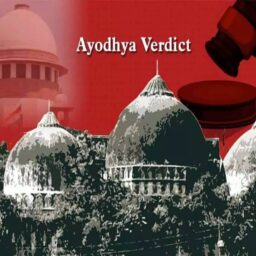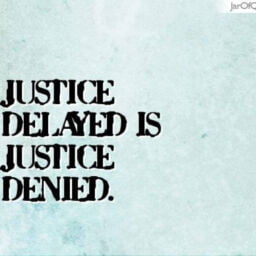INTRODUCTION
Prisons, as places used for the detention of prisoners, invite contempt and disdain from the rest of society. Imprisonment is solely for the purpose of deterring and disciplining the inmates and inflicting harsh treatment is considered as a necessary process towards reforming the same. Prisons stand for a strict regimen and controlled behaviour with a lack of accountability and an unwillingness to provide facilities on the part of the authorities.[1]
In this sense, prisons and prisoners have always been a low priority area for society and administration. It has eventually led to the emergence of a plethora of cases about gross violations of human rights in prisons.
However, neither the Constitution is devoid of such provisions which uphold the rights of the prisoners nor is the Judiciary adopting a narrow approach in interpreting the provisions. The wide interpretation by the courts of the underlying provisions in the Constitution has given way to a budding human rights jurisprudence in the country.
PROVISIONS
Article 1 of the Universal Declaration of Human Rights (1948) states that “All humans are born free and equal in rights and dignity”[2] Article 5 of the declaration further goes on to declare that “No one shall be subjected to torture or to cruel, inhuman, or degrading treatment or punishment”[3] thus establishing the grounds for protection of human rights.
Adopting many of these principles, our Constitution has a chapter on Fundamental rights guaranteeing rights for the dignified existence of individuals. Article 21 which guarantees “Right to life and personal liberty”[4], has been defined by the Supreme Court as “the heart of the fundamental rights”. It has been very liberally interpreted by the Judiciary in several cases thereby upholding human dignity.
In the case “Maneka Gandhi v Union of India[5], the right under article 21 was widely interpreted to include other inherent rights as the right to legal aid, speedy trial, right to a fair trial, right against custodial harassment, protection to prisoners in jail from degrading and barbarous treatment, etc.
Art. 20 of the Indian Constitution provides for “protection in respect of conviction for offences.” It aims to safeguard the rights of the people who have been accused of certain offences. Similarly, article 22 of the Constitution, which has been referred to in many cases, defines the right of a detained person and ensures a lawful and reasonable manner of legal procedures.
Article 39 A of the Constitution directs the State to provide free legal aid to the poor[6].
The Legal Services Authorities Act, 1987 guarantees Legal aid and has prompted several State Governments to establish Legal Aid and Advice Board and frame schemes for Free Legal Aid. Section 309 of the CrPC contains the main procedure for the investigation and trial of an offence regarding the speedy trial.[7]
The Prison Act of 1894 regulates the prisons in India. It is the first legislation that deals with the administration of prisons. Provisions such as examination of prisoners by medical officers, providing for segregation of prisoners, accommodation and sanitary conditions of the prisoners etc. pertain to the moral treatment of the prisoners. However, being a hundred years old it needs to undergo amendments as it still provides for whipping, use of fetters and other outdated provisions which have long been ruled out by the Judiciary in various judgements
LANDMARK JUDGEMENTS
Out of the numerous landmark judgements of the Supreme Court which serve to reiterate the need to uphold human rights, a few have been listed herein.
In Hussainara Khatoon vs State of Bihar,[8] the Supreme court repeatedly stressed on the need for legal procedures to be “just, fair and reasonable.” It stated that the provision of free legal aid provided in Article 39 A is an essential element of “just, fair and reasonable” and is implicit in the guarantee of Article 21. It also puts on the State government a legal mandate to ensure speedy trial for the accused. The Court advocated the establishment of a dynamic scheme of legal services to improve the prisoners’ conditions.
A similar stance on “fair and reasonable procedure” to deprive someone of his life or personal liberty was upheld in Madhav Hayawadanrao Hoskot vs State Of Maharashtra[9], which also underscored the State’s duty to provide free legal services to people who are otherwise unable to do so.
In Khatri and Ors vs State of Bihar[10] or “The Bhagalpur blinding case” the Court was met with the serious offences of inhuman and cruel treatment being inflicted on the prisoners. The Court had yet again emphasised the right to a speedy trial and free legal aid as the prime duty of the State. It also shed light on the role of the judicial magistrates in upholding the rights of the accused people.
In Sunil Batra v Delhi Administration[11], Justice Krishna Iyer stated that “Prisons are built with stones of law’ and so it behoves the court to insist that, in the eye of the law, prisoners are persons, not animals, and punish the deviant ‘guardians’ of the prison system where they go berserk and defile the dignity of the human inmate. Prison houses are part of Indian earth and the Indian Constitution cannot be held at bay by jail officials ‘dressed ill a little, brief authority” This was a dynamic judgment which discussed the prisoners’ question at length enumerating that a person’s rights do not shrink solely because of his incarceration. It pressed the need for prison reforms while strongly disapproving of any breach of human rights by lawless officials.
CONCLUSION
The Judiciary has repeatedly illuminated the masses and the administration on the humanitarian approach of laws and constitutional provisions. In numerous instances, Article 21 has been given the widest interpretation possible. However, the ground realities fail to show any palpable change. The menace of custodial torture and deaths, delay in the court proceedings often leading to a denial of justice to the prisoners continue to grip the society and question the credibility of the criminal justice system. This is due to the lethargic attitude of the enforcement machinery. Lack of accountability on the part of the officers, little or no awareness of prisoners’ rights in the public domain and a feeling of disdain even before conviction have made the violation of prisoners’ rights a commonplace phenomenon. There should be mass awareness programs to sensitise the people about the rights that a person possesses even upon being arrested and detained. A special investigative body should be formed with dedicated officers to carry out probes related to human rights violations in the prisons. Hence, not only progressive provisions and liberal interpretation but proactive implementation on ground for them to hold true meaning.
Author(s) Name: Shrishti Shikha (Symbiosis Law School, Noida)
References:
[1] P.S. Bawa, “Towards Prison Reforms”, 27 India International Centre Quarterly 155 (2000).
[2] The Universal Declaration of Human Rights, 1948, art. 1.
[3] The Universal Declaration of Human Rights, 1948, art. 5.
[4] The Constitution of India, art. 21.
[5] Maneka Gandhi vs Union of India, AIR 1978 SC 597.
[6] The Constitution of India, art. 39A.
[7] The Code of Criminal Procedure, 1973, (Act 2 of 1974) s. 309.
[8] Hussainara Khatoon vs State of Bihar, AIR 1979 SC1360,1369, 1377, 1819.
[9] M.H. Hoskot v. State of Maharashtra, 1978 3 SCC 544
[10] Khatri and Others Vs State of Bihar 1981 SCR (2) 408, 1981 SCC (1) 627
[11] Sunil Batra vs Delhi Administration, 1980 AIR 1579, 1980 SCR (2) 557
















